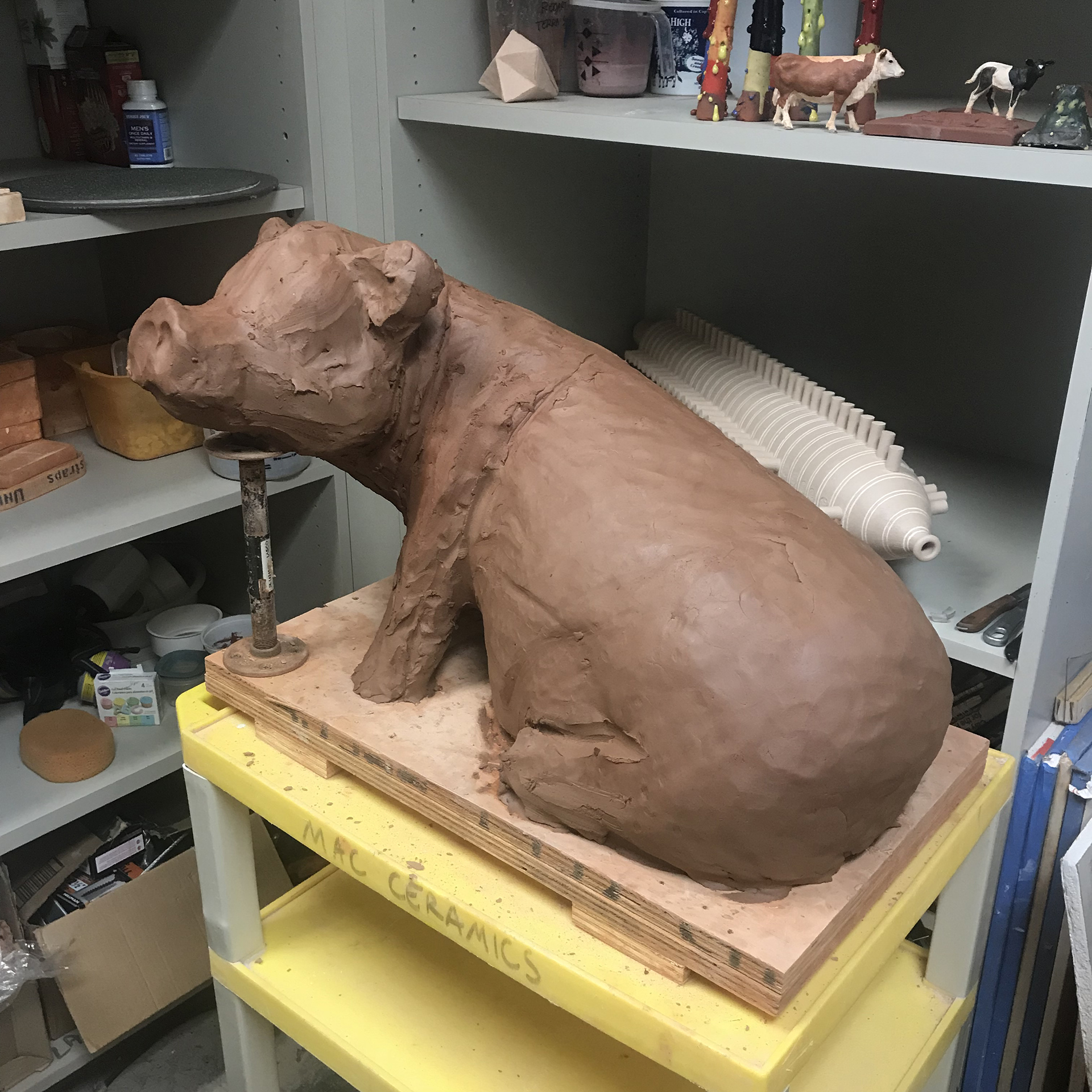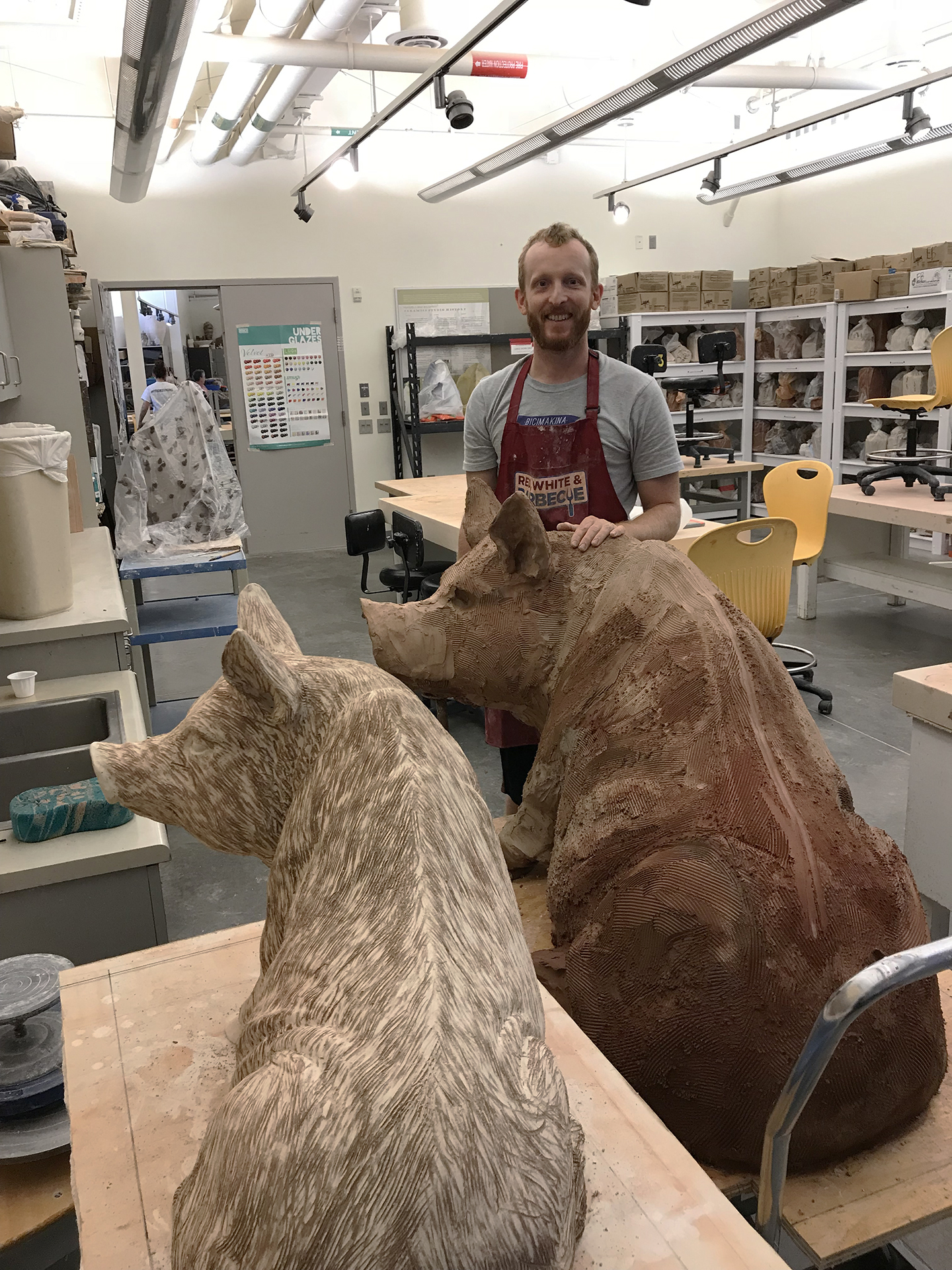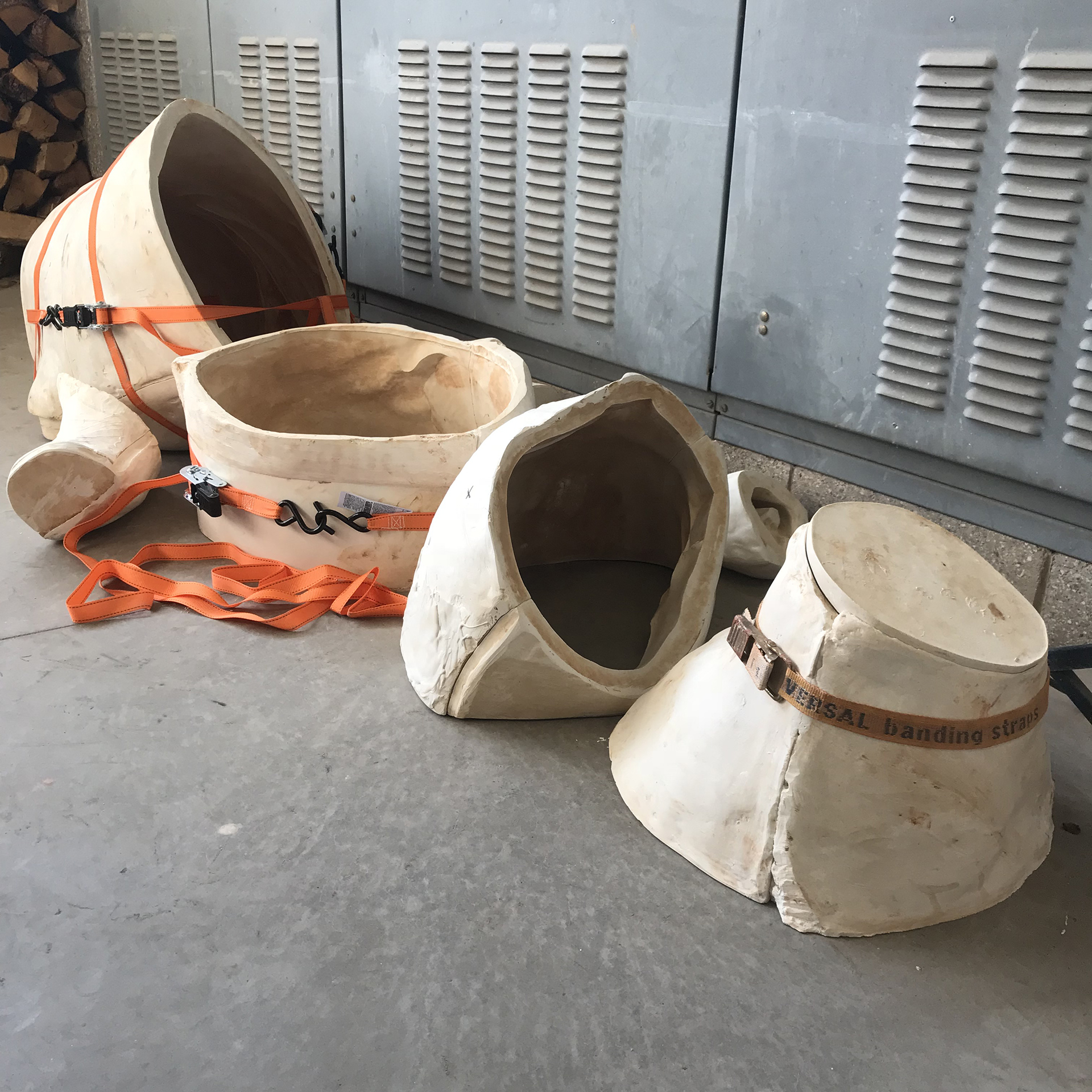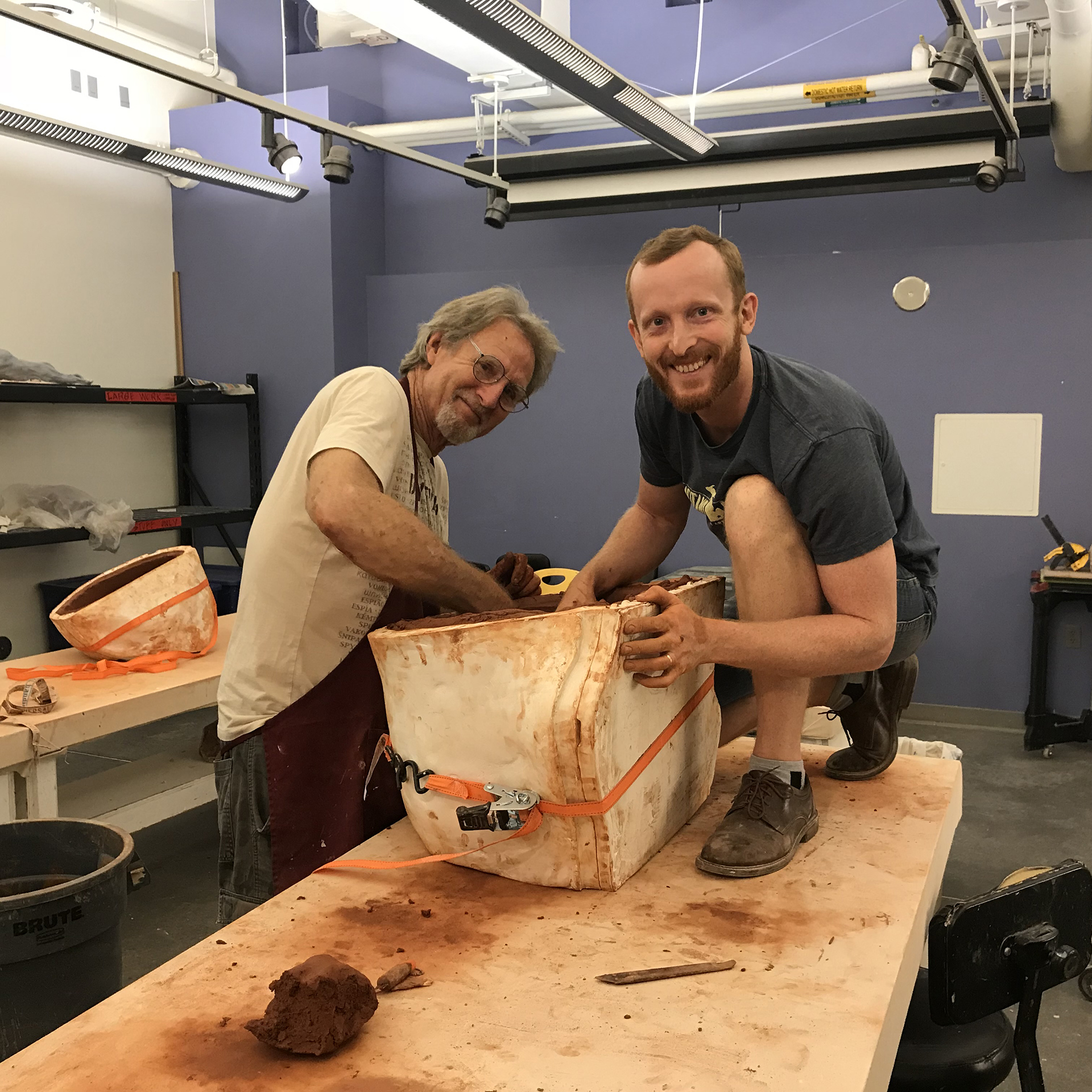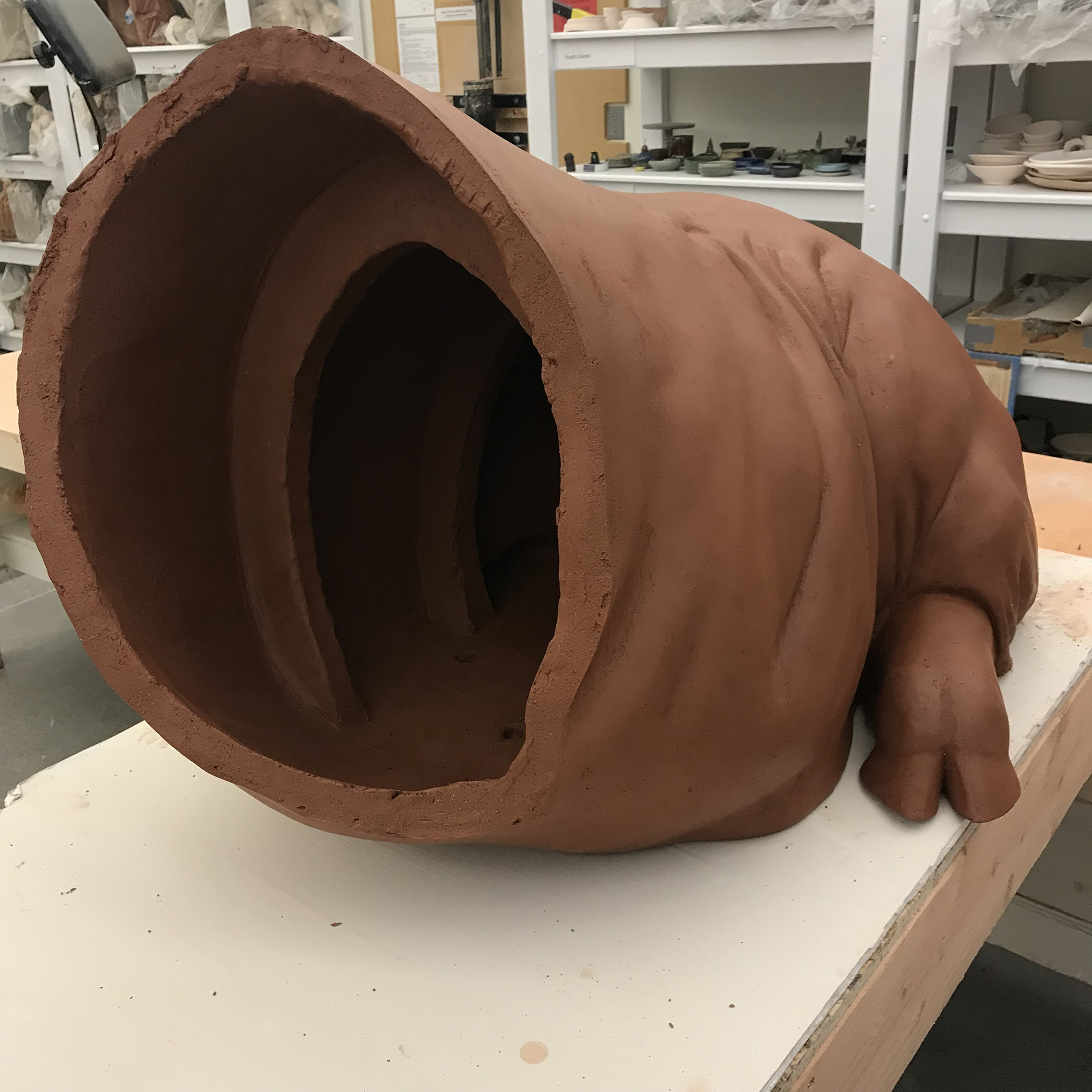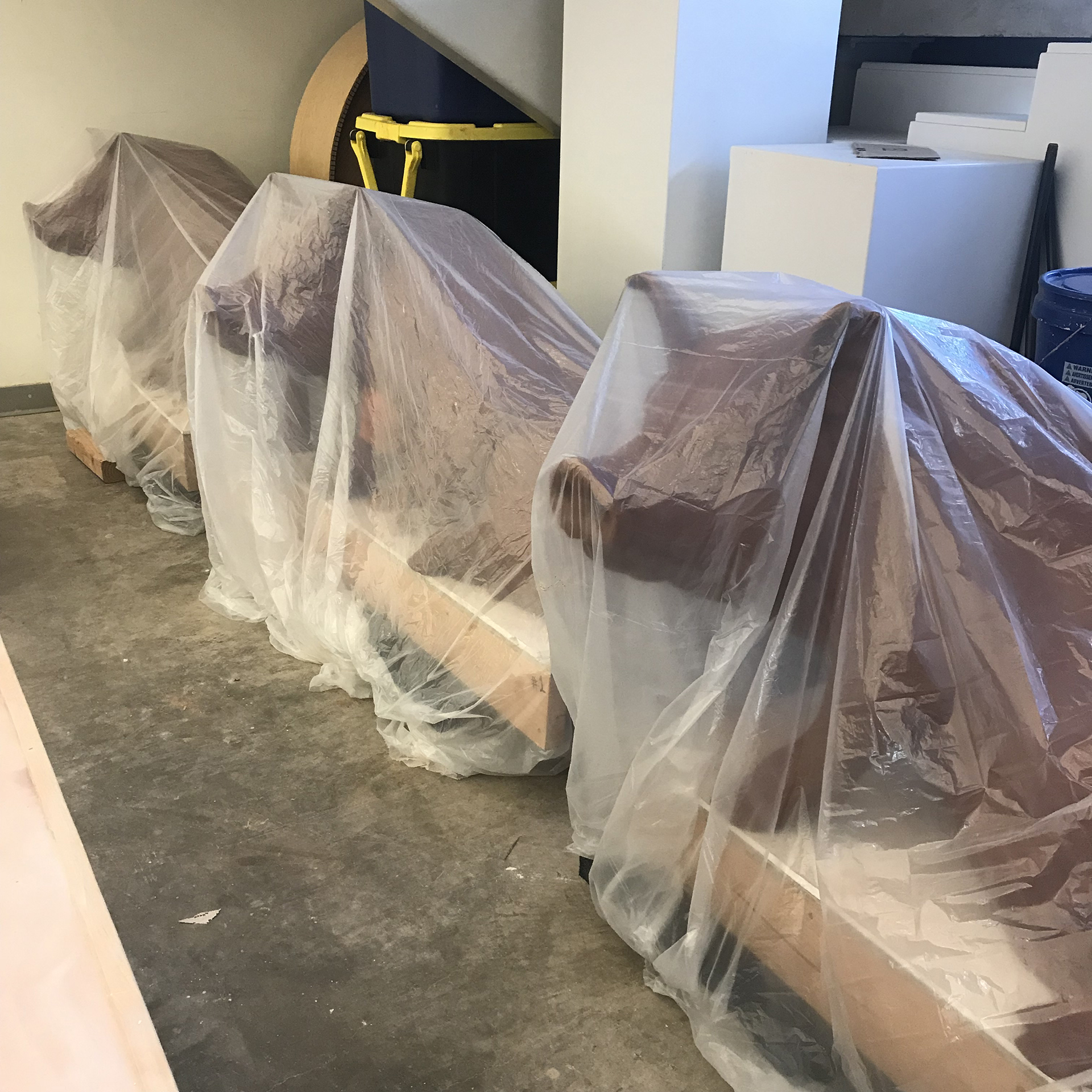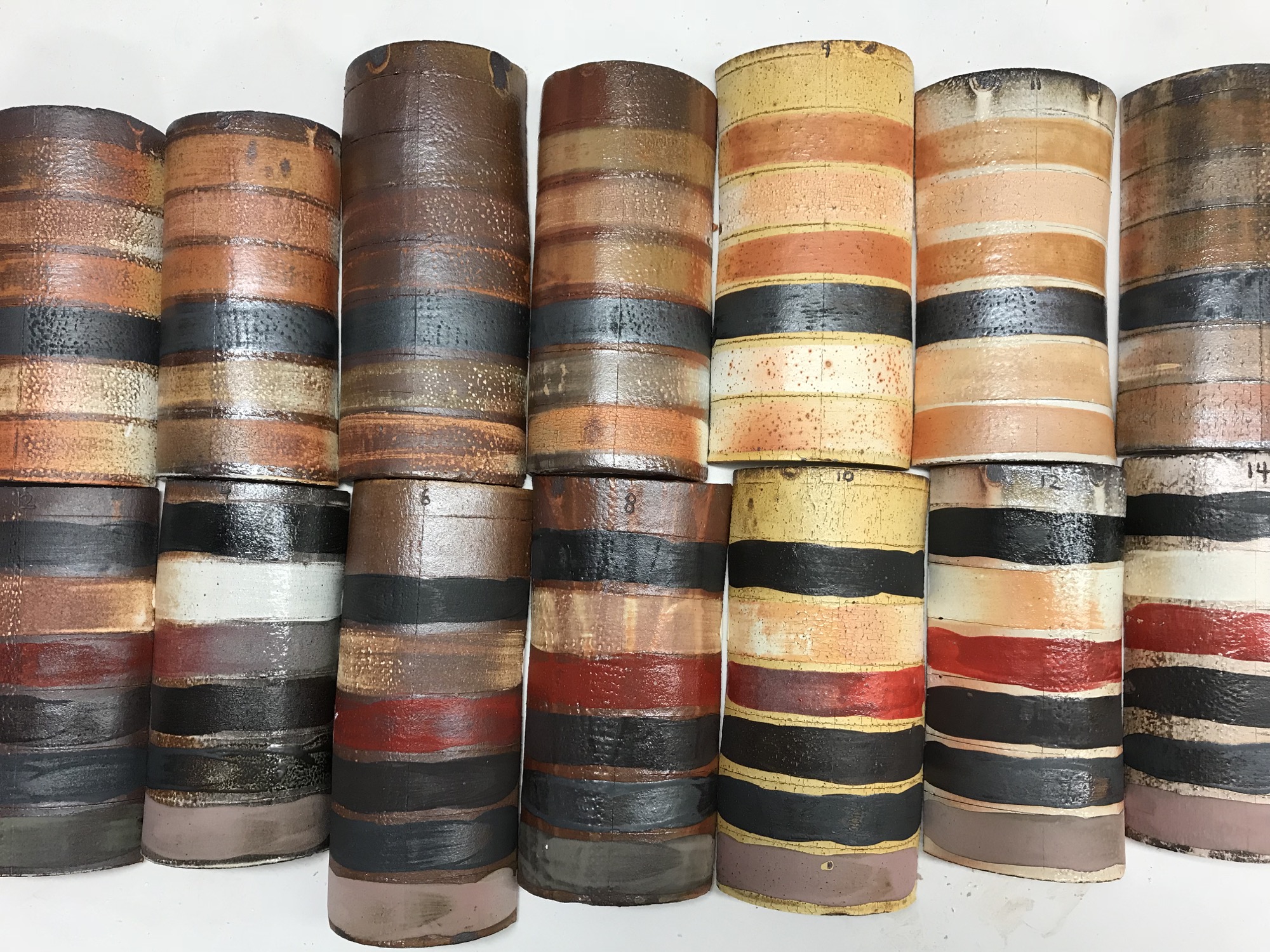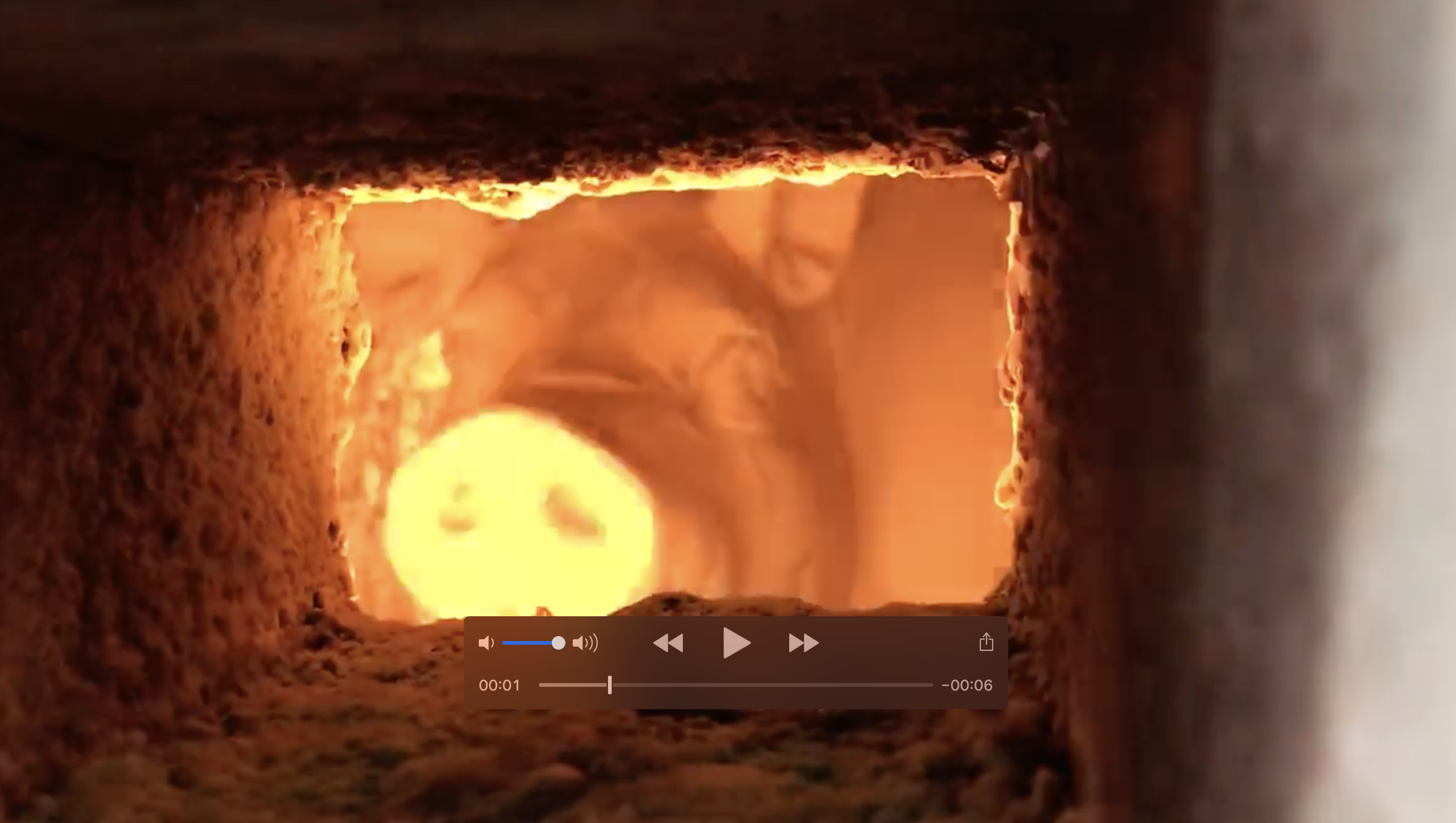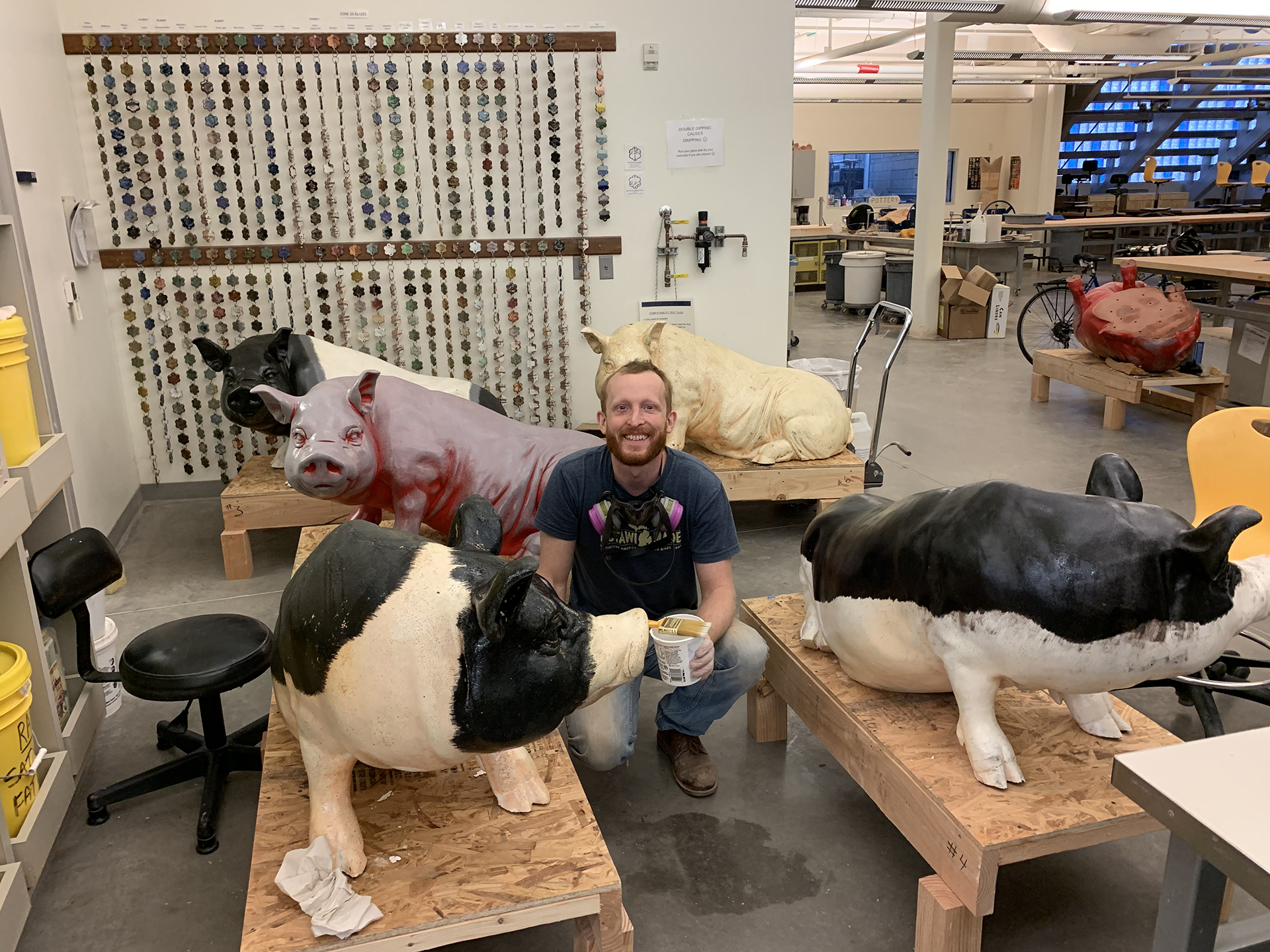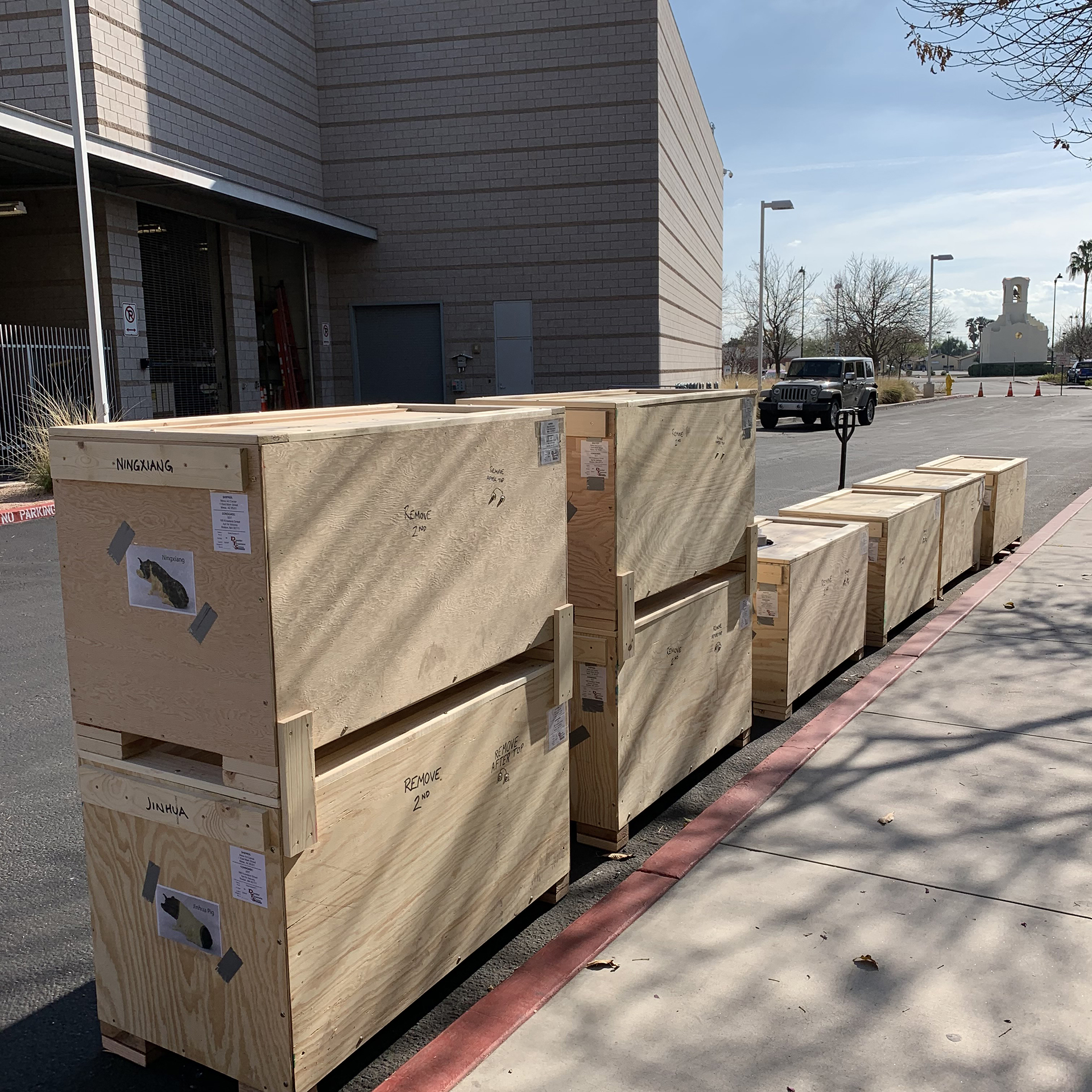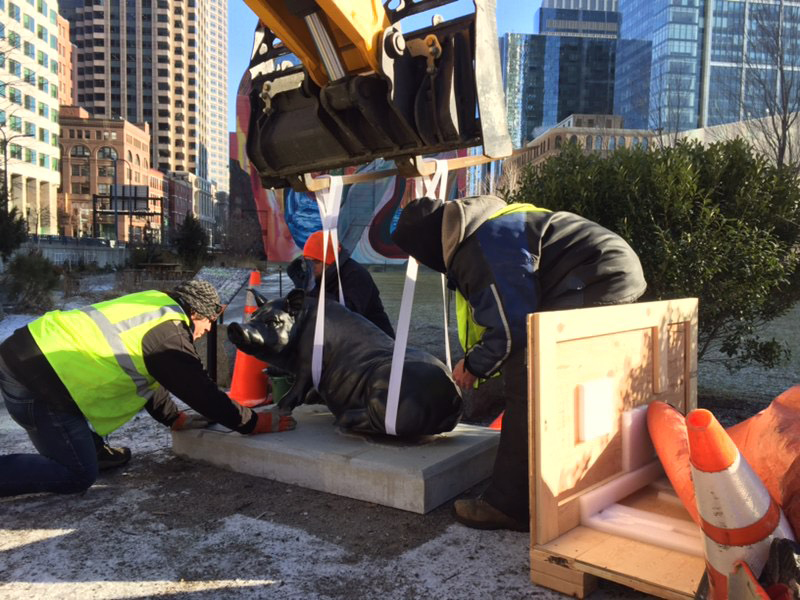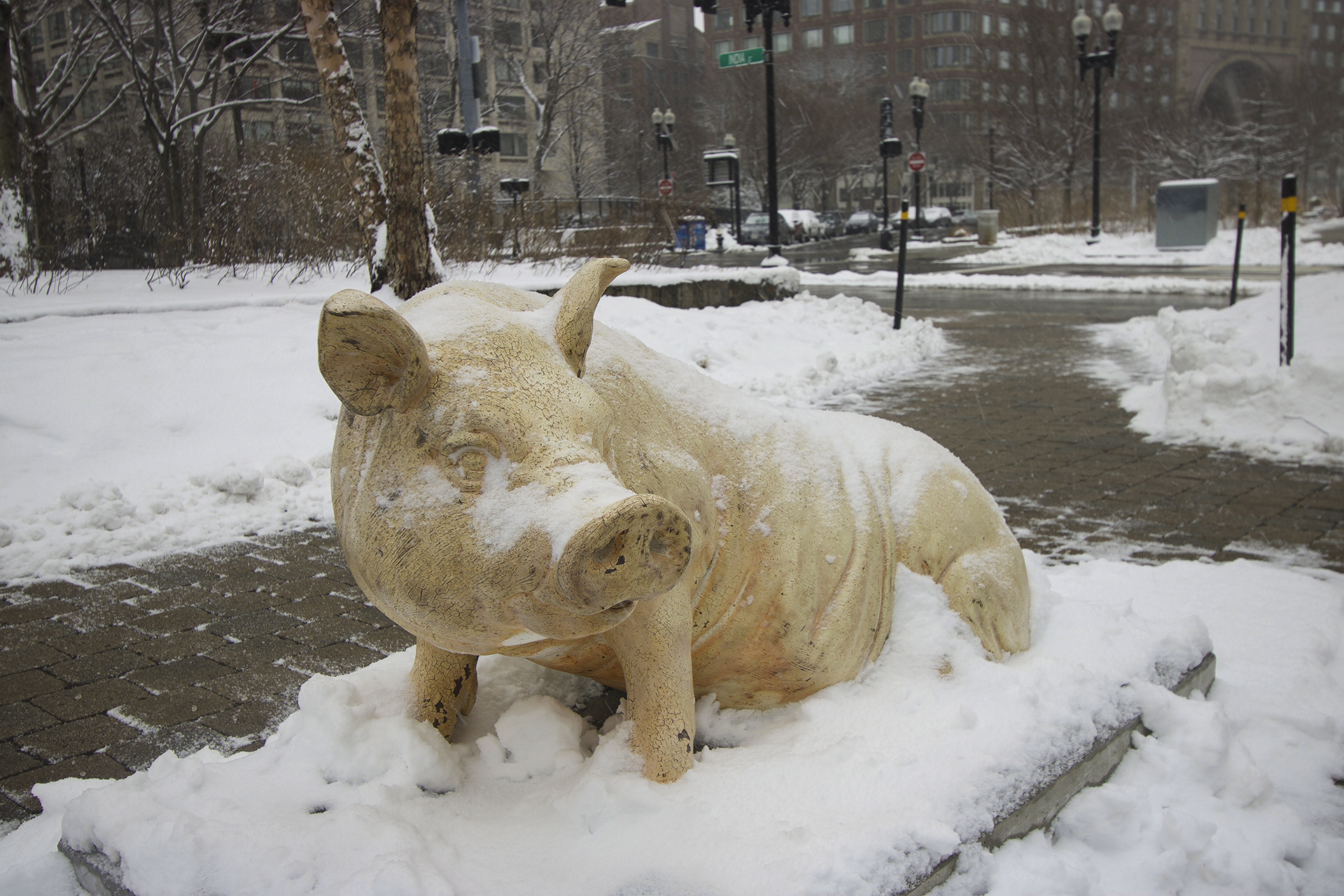Inside Year of the Pig: How to create a sculptural ceramic pig, in 10 (not so) simple steps!
With the aim of celebrating both past and present, each year a new artwork has been installed by the Greenway Conservancy in front of the Essex Street Gate on The Greenway. The installation’s goal is to celebrate the culture, history, and traditions of the Chinese New Year and the Chinatown community through the ideas and expressions of contemporary artists. Past zodiac curations have included Risa Puno’s community storytelling abacus, Year of the Dog (2018), Chis Templeman’s 3D rooster printer Make and Take (2017), Don Kennell’s 12-foot Monkey See (2016), and Kyu Seok Oh’s paper-mache Wandering Sheep (2015).
The Year of the Pig is coming to a close and so too is our installation of eight ceramic pigs by artist Elliott Kayser on The Greenway. To celebrate this year of fortune and good luck, we wanted to share what was happening a little over a year ago in a studio in Arizona where Elliott Kayser made each unique pig by hand.
STEP 1: Create a Maquette
A maquette is a miniature version of the sculpture at about half-scale. Creating a miniature allowed Kayser to visualize the shape and form before making a full-scale model.
The maquette is half-scale, made of solid clay
STEP 2: Create a full-scale model
After the maquette is finished, Kayser produced a full scale model of the pig, again using solid clay. This model will be used as the base shape from which molds are created. These molds will allow for more pigs of the exact same shape to be replicated.
The maquette (white, on the left), and the full-scale model (on the right) sit side-by-side in the artist’s studio. Kayser referenced the smaller model to ensure accurate proportions and sizing for the full-scale model. The model pig was made with 1000lbs of solid clay.
STEP 3: Create the Molds
Once the full scale model is complete, Kayser cut it into pieces which were individually molded with plaster. These molds allowed the artist to re-create the model pig time and time again!
Here the molds are sitting together on the studio floor. Can you spot the different parts of the pig?
STEP 4: Press in the Clay
This particular kind of mold is called a press-mold, where the clay is pressed inside of the mold to a uniform thickness. The clay will catch each nuanced surface in the mold, allowing for the pig to be recreated perfectly. At about 1-2 inches thick, the clay walls house a hollow center which ensures that the pig will not crack or break during drying and firing, while the thick walls ensure its strength.
The artist, Elliott Kayser (right), and his studio assistant pack clay into the walls of the mold
STEP 5: Combine the press molds
Each individual section has to be re-connected to re-built the entire pig body, piece by piece.
After some trials and tribulations, Kayser discovered that simply adding “ribs” into the body of the pig would allow for increased structural integrity without the significant addition of weight or thickness.
STEP 6: Let the Clay Dry
Once the entire pig is built, the clay must fully dry before it can be fired. Each pig had to dry for 1 month before being fired.
Plastic and wet rags are used to control the rate of drying. Thinner clay dries quicker than thick clay, and if the clay dries at a rate that is too different it will crack, causing the artist to have to start over. Here a set of 3 pigs are carefully managed as they dry.
STEP 7: Texture and Glaze
Once the pigs are cast and dried, they are ready to be glazed before they are fired. The surface of each pig is colored with flashing slips (engobes that react to the soda firing environment) and Amaco Velvet Underglazes. Each glaze reacts uniquely in the kiln, creating a unique set of textures and colors.
There are an estimated 48 native Chinese pig breeds still in existence today. To celebrate that diverse heritage, six of the eight sculptures hidden along The Greenway are painted and glazed with unique patterning of specific breeds. From central China, three varieties of commonly called “two-end-black”pigs; from the TaiHu valley comes the Ba Xuyen, a pink pig with black hair; and two black-brown breeds that hail from Wuzhishan and Tibet. The two pigs at the entrance to Chinatown will be glazed red as a stylized interpretation of this traditional zodiac symbol.
Before glazing the pigs, Kayser created tests, carefully documenting the glaze performance to ensure he created the colors he wanted.
STEP 8: Firing
Each pig had to be fired separately because they took up the entire kiln, which meant 4 days from loading to unloading each sculpture (4 x 10 pigs= 40 days of non-stop firing).
The clay has to get very hot to set and secure in to a hard surface. All pigs were fired once in a soda kiln, fired to cone 3 (2106F).
STEP 9: Prep the Pigs for a year on The Greenway
Post firing each pig was ground down on the underside to sit flat and then sealed with a brick sealer (Lastiseal) to help withstand the winter weather.
After firing the true colors and textures of the glazes came to life!
STEP 10: Say goodbye and send off!
Elliott Kayser created 10 Pigs in total, 8 of which were shipped to the Greenway in January of 2019. Each pig weighs approximately 250 lbs and measure 24″h x 48″ x 24″. Producing these pieces was a labor of love, as a studio worked together to create these large ceramic sculptures. Many thanks goes out to assistants Mary Megehee, Steve Wolf, Zach Valent, and Rob Kolhouse for their work in helping us celebrate The Year of the Pig on The Greenway!
Argo Art Services (Neil Borowicz) built the crates
One the pigs arrived on The Greenway, They were installed on site by BRM Productions.
Why 8 pigs throughout The Greenway? Elliott said:
“When I visited Boston to see the site for this year’s Chinese Zodiac project, I was struck by the history of Chinatown in Boston. I wanted to be sensitive to what it means for me, a white male, to be commissioned to create a project to celebrate a Chinese tradition. The old community center building had been literally cut in half to make way for the freeway during the Big Dig. The land where Chinatown stands is under constant threat of gentrification. The perceived boundary line between Boston and Chinatown, although invisible, is something I wanted to address because as an artist living in Arizona, issues of the border and immigration are something I think about often. Because of this, I decided to expand my project outside of Chinatown, locating pigs throughout The Greenway. This gesture not only breaks the boundary, but also leads people into and out of Chinatown, helping them participate in the tradition and appreciate the value of the neighborhood. It was created with the intention of creating a cultural exchange, of adding value to diversity, and advocating for the continued support of the Chinese American community.”
Love the pigs? This January, five of the original pigs are moving to the Fuller Craft Museum where they will be on display and for sale for $6500 each.

